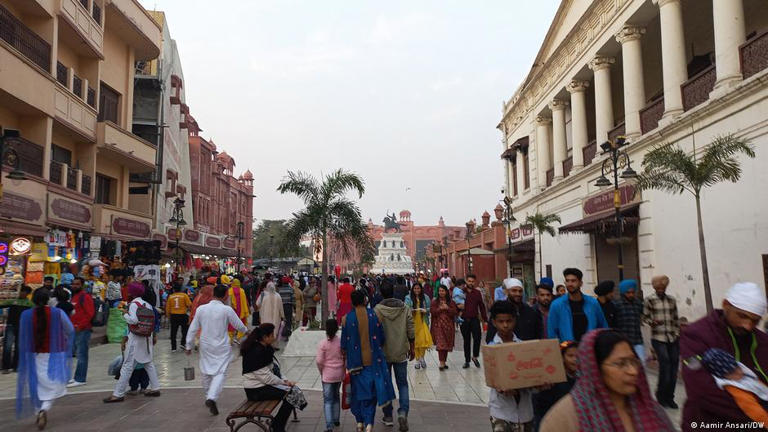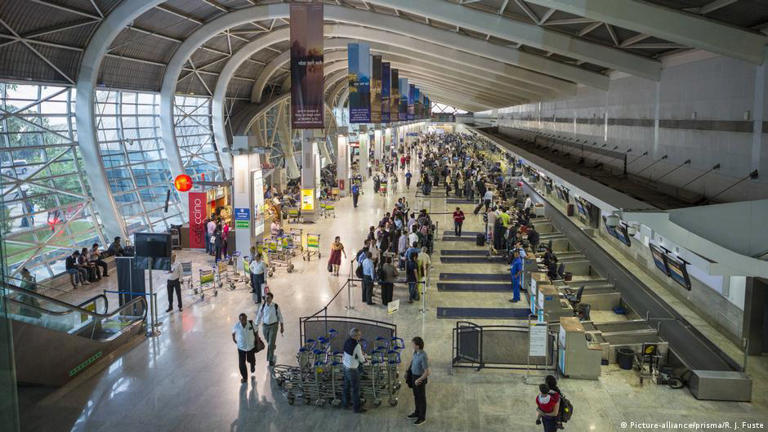A series of record airplane orders is turning India into the aerospace industry’s hottest growth market. Air India is on a buying spree, likely to be followed by IndiGo, and it will make Airbus and Boeing even richer.
Having hardly taken a breath after completing mega plane purchases from India, Airbus and Boeing, the world’s largest aircraft manufacturers, are in for another record-setting order from the subcontinent.
In February, recently privatized national carrier Air India signed letters of intent with both planemakers for a total of 470 new jets, plus leasing agreements for 25 further aircraft to ease short-term requirements. A total of 495 aircraft in one go has set a new buying record for the industry.
Now IndiGo is gearing up to gain the title of world record holder. Recent media reports say IndiGo is planning to place orders in excess of 500 aircraft at once. Contracts for the mammoth deals are expected to be signed at the Paris Air Show in June.
Based in Gurgaon, Haryana, low-cost airline IndiGo is the undisputed aviation market leader in India in terms of passengers carried and fleet size, while former state-owned Air India had a market share of just under 10% in 2022.
Indians’ favorite airline
IndiGo was founded in 2006 as a private company by aviation veterans Rahul Bhatia, the founder of air transportation company InterGlobe Enterprises, and Rakesh Gangwal, an Indian-American billionaire and former CEO of US Airways Group.
As of November 2022, the airline operates 1,600 daily flights on 75 domestic routes and 26 international. It has its primary hub at Indira Gandhi International Airport in Delhi. Travelers associate it with qualities unusual for Indian airlines — highly efficient, customer-oriented, modern — but most of all for offering value for money, while performing on time and reliably. Little wonder, then, that the airline reached a market share of more than 55 % last year — outflying its closest competitors SpiceJet and Air India by orders of magnitude.
Sporting a blue-and-white livery on its planes, IndiGo operates exclusively Airbus jets, with a fleet made up of 268 Airbus airliners and 39 European-built ATR turboprops.
Long-lasting Airbus partnership
The airline’s long partnership with Airbus dates back to 2005, when, as a startup, IndiGo commited to buy a hundred A320s. In 2011, it made a follow-up order for 180 planes and then again for 250 in 2015 — at the time the largest individual contract for Airbus.
In 2019 another record deal was signed with Airbus, this time for 300 aircraft of the A320neo family, making IndiGo the world’s largest operator of the efficient twin-engine jets. Currently it operates 730 planes of the type out of a total of 830 aircraft ordered from Airbus, with 488 still to be delivered to Indigo.
“Indigo’s spectacular growth and ambitious aircraft ordering helped India transform from the world’s 13 busiest airline market on the eve of Indigo’s launch, to number three in the world today,” says Mike Malik of aviation data analyst Cirium.
IndiGo’s planned mega order is not the only major deal from India looming on the horizon. Newly established low-cost airline Akasa Air, started in August last year, has announced plans to place a “substantial order” for single-aisle jets that would come on top of a current order of 72 Boeing 737 MAX jets made in 2021.
India: The hottest growth market for planemakers
Tying with China, India is the world’s most populated country, with a population of about 1.42 billion. According to a tally by the International Monetary Fund (IMF), it has already overtaken China. What’s different, though, is that the Indian population is much younger, with a median age of just 28 years, compared with 39 years for China.
Even more importantly, India’s potentially huge air passenger market remains largely untapped, as only 4% of the population have ever flown. Aviation expansion was hampered by high fares, unaffordable for many, and a lack of infrastructure, especially in more rural areas.
But with economic growth expanding at a pace of about 5% to 6%, “people are becoming wealthier,” India’s former aviation minister Javant Singh said two years ago, and their propensity for air travel has grown.
“There are currently 50 million Indians who would qualify as the global middle-class, which means they can fly anywhere in the country or internationally. But at the moment only 20 million to 25 million of them are doing so,” Sinha said, highlighting the hidden potential for aviation growth.
There are estimates suggesting India could become the world’s second-largest aviation market by 2038 — ranking behind the US, but ahead of China — and likely overtaking even the US market in about two decades.
The aviation industry online portal FlightGlobal recently asserted that India had displaced China “as the global aerospace industry’s growth frontier, with a bigger order book and a more welcoming economic and geopolitical outlook.”
Modi policies foster industry growth
The prime mover behind the boom is India’s prime minister Narendra Modi. His Hindu nationalist government has liberalized the aviation sector, doing away with the country’s notorious bureaucracy and excessive state regulation.
As a result, passenger numbers grew from 65 million in 2010 to 168 million in 2019. By comparison, Chinese numbers stood at 660 million air travelers in 2019.
What India needs most of all are modern passenger aircraft, of which it has only about 700 flying for the country’s airlines — ridiculously few given that US carrier American Airlines alone operates 900 planes.
But things have already begun to change. At the moment, India’s airlines are waiting for 1,200 planes to be delivered over the next few years. In 2019, new plane orders from the subcontinent had already surpassed those made by China. US planemaker Boeing has estimated a total demand of 2,380 new aircraft from the country until 2038.
The Modi government, meanwhile, is anxious to make sure aviation infrastructure is keeping up with the rapid growth. Even though Mumbai Airport, as one of India’s busiest hubs, still has only one runway, the number of airports elsewhere in the country has grown from 74 to 147 in the past nine years. A further 80 airports are scheduled to go into operation within the next five years.







